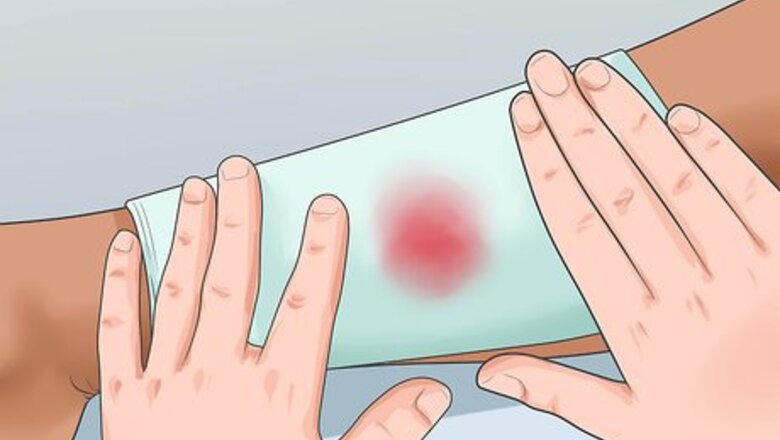
views
X
Research source
However, you may need to splint the leg if the break happens when you're not near medical help, such as when you're camping or hiking. Research suggests that a splint can immobilize your leg, which will help stabilize the fracture and reduce the risk of it getting worse.[2]
X
Trustworthy Source
National Health Service (UK)
Public healthcare system of the UK
Go to source
After you splint the fracture, go to the doctor so you can start your road to recovery.
Applying Emergency First Aid
Use scissors to remove clothing from the area. Excess clothing will get in the way of any treatment you need to do. You can also use some of the excess clothing to help stop the bleeding if you don’t have a lot of other materials to work with. If you don’t have scissors, you can use a knife, but make sure the blade is pointed away from both you and the victim.
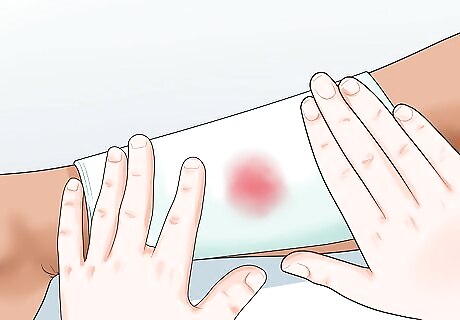
Stop any bleeding. Before dealing with the fracture, you need to stop the bleeding, especially if it is profuse. Use a cloth and apply pressure to the wound. If you soak the cloth, apply more cloth on top of it. Don’t remove the cloth from the wound. To help slow the bleeding, raise the leg above the heart. Make sure that you always wear gloves to prevent the spread of bloodborne pathogens. Wash or sanitize your hands first, and then put on gloves. Know that, if you choose to treat a bleeding person without gloves, you may expose yourself and that other person to one another's bloodborne diseases.
Put ice on it. Make sure to wrap the ice in a cloth (a towel or some cotton clothing will do) before applying it to the break. Ice will reduce the swelling. It will also help to relieve some of the pain. If you have an ice pack, that works best with the least mess. You can also use a bag of frozen food, such as peas.
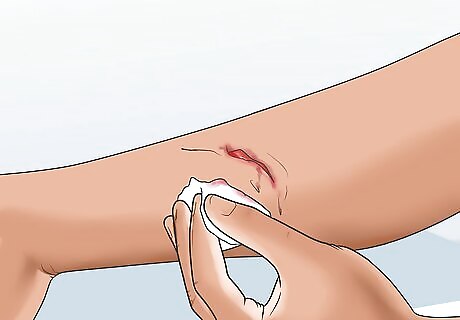
Clean the wound, if necessary. At this point, you should only clean the wound if the wound is heavily contaminated, superficial, or hospital care is delayed. While cleaning the wound is important to reduce the risk of infection, it is also important to stop the bleeding, which can be fatal a lot more quickly than an infection.
Splinting the Leg
Do not push in a broken bone or try to set the fracture. This is extremely important. Only a doctor should do this, as you could potentially sever an artery or cause nerve damage. Instead, simply try to immobilize the area rather than trying to manipulate it.
Place the splinting material parallel to the leg as gently as possible. You should pad the leg first with foam padding, a pillow, a blanket, or a piece of corrugated cardboard. Then, some solid, structured material should be used along the sides of the leg so it will not move. Hard cardboard or a tent pole work well for this. The splint should extend from above the knee of the injured leg to just below the heel. This will offer maximum stability for the broken leg. If you do not have a first-aid splint on hand, you can use any rigid objects such as sticks to make the splint.
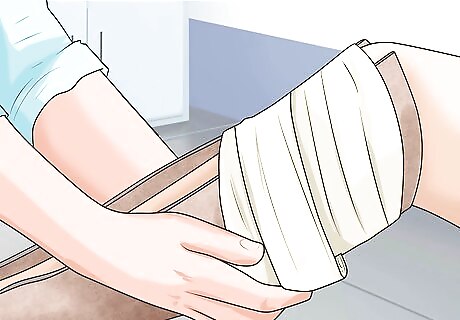
Secure the splint with some kind of wrapping. Use cloth or wrapping tape to secure the splint. You can also use duct tape. Tie the splint above and below the injury, making sure to include the joint above and below in the splinting. This will help to stabilize the splint. Be careful not to wrap it too tight as this can cut off circulation.
Check for a pulse beneath the splint. If there isn’t, this likely means the splint is wrapped too tightly. Loosen the splint and check again. Circulation is incredibly important to maintain the health of the leg during splinting.
Make sure the splint fits comfortably on the leg. Avoiding points that are especially painful can help with this. Listen to the person you're splinting, as they will have a good idea of whether the splint is comfortable, and will let you know. If the splint is uncomfortable, unwrap it and reposition splint and perhaps wrap less tightly.
Avoiding and Treating Shock

Don’t move the leg any more than necessary. This is necessary to avoid causing any more damage or increasing pain. An increase of pain or damage can cause the patient to go into shock. So, make sure you keep the leg steady and still.
Check the area below the break. If it is swollen, turning pale, or becomes cool to the touch, there may be compromised vascular supply. The key thing is reestablishing vascular flow, which is best done at a hospital. For severe shock, you need medical attention, and there aren't a lot of things you can do in the wilderness. In any case, make sure the patient stays hydrated with water until help arrives, or until you can get them to the ER.
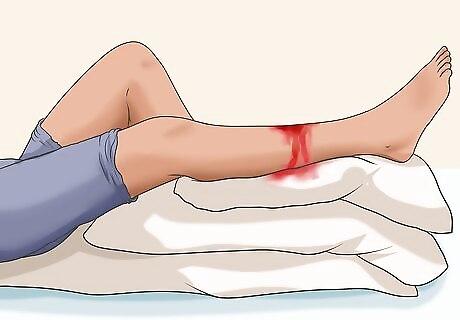
Try to raise the legs above the head if shock occurs. This will possibly help the blood flow to the heart. While there are no studies that show the effects of leg elevation for shock, it might help. However, you should not elevate the legs if the injured person also has a head or abdominal injury. Also, you should not elevate an injured extremity because it will be painful and can worsen the injury.
Treat pain with mild pain relievers. Acetaminophen will usually work (assuming the injured person does not have an allergy or some other contraindication against the medicine). Some studies suggest avoiding NSAIDs (non-steroidal anti-inflammatory drugs, such as ibuprofen or Advil) after a break, as they are thought to slow down the healing process of fractures and may also increase bleeding.



















Comments
0 comment